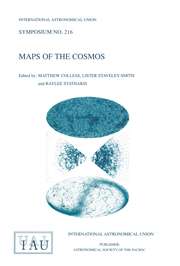No CrossRef data available.
Article contents
Far-UV Spectral Variability In UM425 & PG1115+080
Published online by Cambridge University Press: 25 May 2016
Extract
Core share and HTML view are not available for this content. However, as you have access to this content, a full PDF is available via the ‘Save PDF’ action button.
Determining the nature of spectral variability in gravitationally-lensed BAL (broad absorption line) quasars is important for time-delay and microlensing studies because the delay-times can be comparable with the time scales of intrinsic QSO ionization changes. Far-UV spectra of the candidate lens UM 425 = Q1120+019A and PG1115+080A (Triple Quasar) revealed the presence of strong O VI λ1033 emission. In both cases, absorption in the blue-wing of the O VI line profile indicated characteristic BAL outflow.
Information
- Type
- Chapter 8: Quasar Structure & Microlensing
- Information
- Copyright
- Copyright © Kluwer 1996

